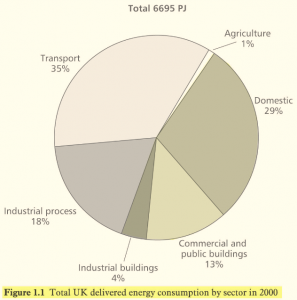Chasing a made up number's source...
A while ago I wrote about the magical 45% number that is cited whenever anyone tries to justify their involvement in a built-environment project that seeks to reduce CO2 emissions.
In the last few months I’ve made a few steps in finding the source of this number, and it seems that it might pay to be a bit more careful while using it in future. (Seems - I’d like to know if anyone knows better.)
 The most likely source of the number comes from CIBSE guide F. (Thanks Sophie for finding it, I know I’ve been a terrible bore about this subject.)
The most likely source of the number comes from CIBSE guide F. (Thanks Sophie for finding it, I know I’ve been a terrible bore about this subject.)
| domestic | Commercial & Public | Industrial |
| 29% | 13% | 4% |
all adds up to 46% - eureka! It has been found! Lets just cross our Ts and dot our Is to be sure.
This table comes from the ‘Digest of UK energy statistics (London: The Stationery Office)’, and was published in 2000. There are a couple of tricky things here, one glaring, and one that takes a bit of digging. Firstly, 2000 was 11 years ago, and the odds are that the data are even older. 12 years ago I looked like this! These data are published annually and a lot happens in 12 years - is it still a valid number to be quoting? I had a look, and the stationary office doesn’t publish that data any more, it is the the Department of Energy and Climate Change’s thing.
The places that I’ve been most successful in finding useful information are:
- Eurostat:Using official statistics to calculate greenhouse gas emissions: A statistical guide html version, pdf.
- Department of Energy in the US
If there is an up to date figure then I’d love to see it, it’d make me feel like much less of a fraud when I try to convince people about this kind of thing.